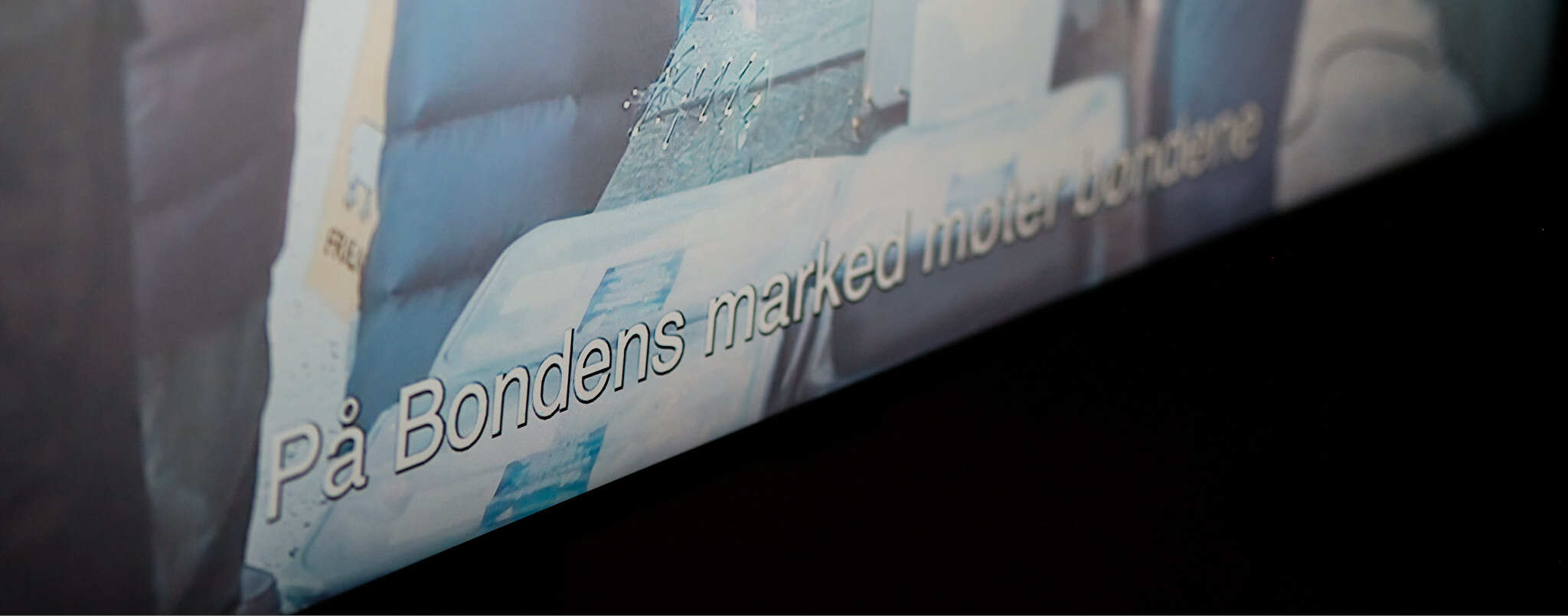Subtitles – Why Does It Matter?
Film Production

Let’s get the less exciting part out of the way first: In 2025, it will become mandatory for businesses – both public and many private – to subtitle all film and audio content they publish. This is part of the EU Accessibility Directive (EAA), which aims to ensure equal rights for people with disabilities and make digital content accessible to everyone.
For public entities, this is already a legal requirement. From June 2025, it will also apply to private businesses with over 10 employees or an annual turnover exceeding 20 million NOK. This means that all pre-recorded audio and video content must be subtitled or include a text alternative that conveys its content. Violations of the regulations may lead to corrective orders – or in the worst case, daily fines.
Good practice
Subtitling isn’t just about complying with the law; it’s also a highly effective way to increase both accessibility and reach.
Five good reasons to subtitle films and podcasts:
- Reach
- Sometimes, people watch videos without sound. For example, in public spaces or because they’ve muted their social media. Subtitling ensures your message gets through, no matter the volume.
- Accessibility
- People with hearing impairments and other disabilities can easily access your content when it’s subtitled. Additionally, subtitling is practical for those who prefer reading or struggle with understanding accents or complex language.
- Visibility
- Search engines like Google excel at indexing text. With transcripts and subtitles, your content is more likely to be picked up by new audiences. Technically, it’s recommended to use formats such as:
- WebVTT: Makes text searchable and copyable on websites (like the video on our main page).
- SRT: Commonly used on platforms like YouTube and Vimeo, where subtitles can be toggled on and off.
- Burned captions: Text is “burned into” the video file – ideal for screens in locations featuring Hallingcaster Aktivert✓ (our Digital Signage platform).
- Search engines like Google excel at indexing text. With transcripts and subtitles, your content is more likely to be picked up by new audiences. Technically, it’s recommended to use formats such as:
- Room for improvement
- Subtitling allows you to adjust phrasing, fix speech errors, and clarify your message. This creates a better experience for the viewer and helps you communicate your points more effectively.
- Flexibility and reusability
- Once your video is subtitled, the transcript can also be used as a foundation for blog posts, presentations, or even books.
From us to the food producer
An example of the importance of subtitling can be found in the Hallingcast film about Vats Gardsmat. The film is available on social media and, via a QR code linking to Hallingcaster Publisert✓ (vatsgardsmatfilm.no), easily accessible from product packaging – divided into smaller chapters. Those who scan the code or watch the film on social media can follow the content without sound – whether they’re at home or on the subway ride back from the farmer’s market.
The film about Vats Gardsmat (23 minutes) can also be viewed in its entirety on Hallingcaster Aktivert✓ – located, among other places, in the café at Samhald. Engaging visuals and a message that resonates, even without sound.
The benefits are many
Subtitling and transcribing are mandatory, but they’re also an opportunity to expand your reach and engagement. The advantages are clear:
- Better accessibility.
- Increased visibility/searchability.
- The ability to reach international audiences effortlessly.
A little PS to wrap up:
Hallingcast AS delivers professional corporate presentation films. We’ve also written an article about how sound and music can enhance a brand. Like you, we prefer that videos are usually watched with sound. We don’t time rhythm and tone in post-production just for fun 😆
All films we produce are published on Hallingcaster, as well as YouTube and Vimeo, unless otherwise agreed.
Contact us if you’d like a presentation film for your company.





